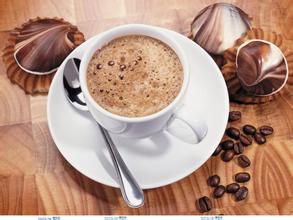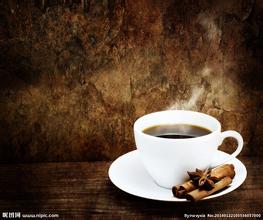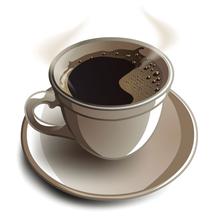Flavor description of Katim Coffee beans introduction of Grinding scale in Manor production area
1. The state-run Lujiang Farm in Baoshan City planted 12.6 mu in March 1991. The land is unshaded and irrigated once in the dry season. The level of management and fertilization is above. In 1993, the average yield per mu was 75 kg in 1993, 350 kg in 1994, 225 kg in 1995, 217 kg in 1996, and 36% higher than Tiebika and Bobang (160 kg per mu).
2. Yunnan Dehong Tropical Agricultural Science Research Institute 1991 planted 30 mu with no shade and anhydrous irrigation, with a medium level of fertilization and management. the average yield per mu was 304.3 kg in 1993, 294 kg in 1994, 222.5 kg per mu in 1995, 273.6 kg per mu in 1995 and 1996, and 82% higher than that of S288 (S288).
3. The covered field coffee base of Ning'er County Coffee Company planted 50 mu in July 1998. the site environment was unshaded, the level of management was medium, and the level of fertilization was low, but the soil fertility was high. Since 2000, the average yield per mu was 285kg in 2001,2002,340kg in 2002,293kg per mu in 2003,306kg per mu in three years, 53% higher than PT and 91% higher than P4 (PT). The average yield of P4 is 160 kg per mu.
Katim, it's hard to say. I have limited ability to express myself. To introduce it in simple words is messy but has a heavy taste. All of the above depends on my personal feeling of drinking coffee. I don't sell coffee beans or open a coffee shop. I just like to drink and think about it by myself. Hehe, it doesn't represent any authority, it's all my own feelings.
The output of Tiebika in Yunnan coffee is the lowest and the most expensive, and it also belongs to the best of Arabica species in the world, of which the Blue Mountains of Jamaica and Kona of Hawaii can be said to be Tibica. Due to changes in origin and some cultivation, Yunnan Tiebika is softer and sour is not as sour as Blue Mountain. But overall, Tibica tastes light (it should be very light), but it has a long aftertaste.
Baibang is second only to Tibica, which has a higher yield and a stronger flavor, and is not easy to buy on the market.
Katim is a variety introduced later, with a relatively stable output and strong resistance to diseases and insect pests. It is planted in a large area in Yunnan, and now it is easy to buy Katim beans on the market. Katim aa beans are also exported beans, which is not bad on the whole. Not to mention in China, even in the whole of Asia, Yunnan's beans are very excellent. As for cat shit, Manning and so on, it cannot be compared with Tibica in terms of coffee beans alone. These are the basic varieties in Yunnan. Generally speaking, they all belong to Tibica and the later varieties under Arabica, which is different from Robusta in Hainan.

Important Notice :
前街咖啡 FrontStreet Coffee has moved to new addredd:
FrontStreet Coffee Address: 315,Donghua East Road,GuangZhou
Tel:020 38364473
- Prev

Description of Grinding scale Flavor of Panama Hamante Coffee Bean introduction to Grinding scale of varieties in producing area
Panamanian rose summer growth altitude: 1500-1650 meters, the unique growth environment makes it unique flavor: dry aroma: tea, flowers (magnolia, tulips) vanilla plants, milk, black sugar sweet, high champagne and aroma up. Wet fragrance: apricot, caramel, milk, flower. Sipping: good oil quality, delicate Lishan special tea feeling, high-grade liquor astringent but then turned into delicate and smooth
- Next

Introduction to the manor production area of Columbia Huilan Coffee Bean Variety Grinding scale treatment
The land of the District of Columbia [2] originally came from Maryland and Virginia. When the District of Columbia was founded, the north bank of the Potomac River included Georgetown (Georgetown,D.C.), Washington City (Washington City,D.C.) and Washington County (Washington County,D.C.). In 1878, the three places merged into Washington, D.C., and the city of Washington.
Related
- Detailed explanation of Jadeite planting Land in Panamanian Jadeite Manor introduction to the grading system of Jadeite competitive bidding, Red bid, Green bid and Rose Summer
- Story of Coffee planting in Brenka region of Costa Rica Stonehenge Manor anaerobic heavy honey treatment of flavor mouth
- What's on the barrel of Blue Mountain Coffee beans?
- Can American coffee also pull flowers? How to use hot American style to pull out a good-looking pattern?
- Can you make a cold extract with coffee beans? What is the right proportion for cold-extracted coffee formula?
- Indonesian PWN Gold Mandrine Coffee Origin Features Flavor How to Chong? Mandolin coffee is American.
- A brief introduction to the flavor characteristics of Brazilian yellow bourbon coffee beans
- What is the effect of different water quality on the flavor of cold-extracted coffee? What kind of water is best for brewing coffee?
- Why do you think of Rose Summer whenever you mention Panamanian coffee?
- Introduction to the characteristics of authentic blue mountain coffee bean producing areas? What is the CIB Coffee Authority in Jamaica?

